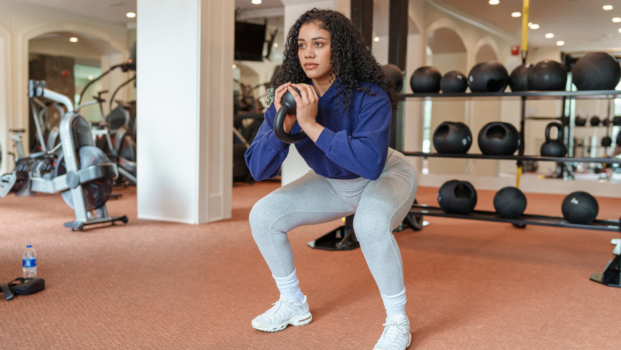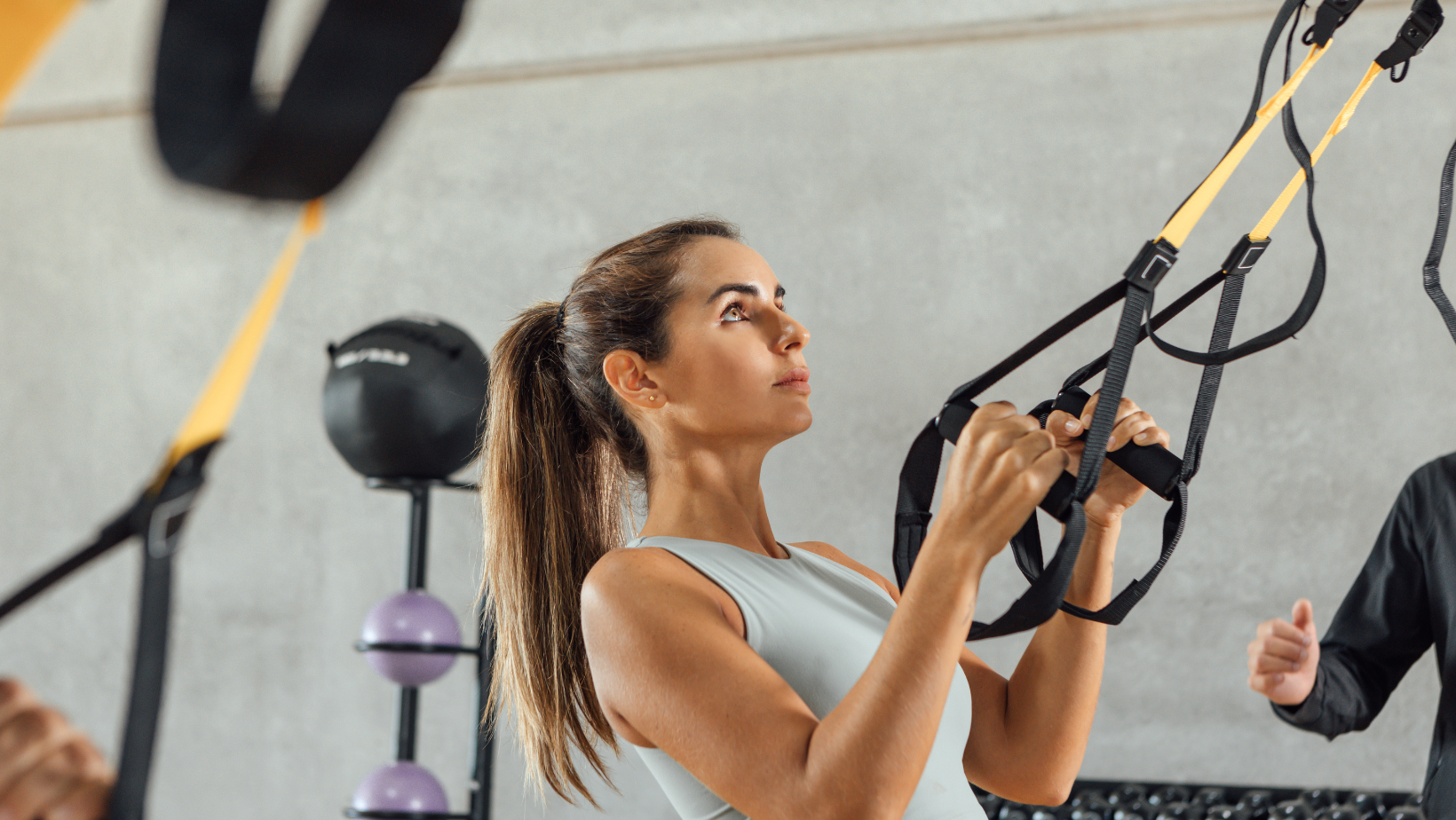High-Intensity Interval Training (HIIT) is a powerful cardio workout known for its efficiency in burning calories, boosting endurance, and enhancing cardiovascular health. HIIT uses high intensity intervals to maximize efficiency and results. It’s a go-to choice for individuals seeking an effective exercise routine that fits into busy schedules.
While HIIT delivers impressive results, it’s essential to approach it with the right strategies to maximize benefits and minimize risks. HIIT improves aerobic fitness and cardiovascular fitness, making it a powerful tool for overall health. Let’s explore the dos and don’ts of HIIT to ensure you get the most out of your training sessions.
HIIT involves alternating between short bursts of intense cardio activity and low-intensity recovery periods. For example, sprinting at full speed for 20–40 seconds followed by a light jog or walk for 1–2 minutes. These intervals are repeated multiple times, typically over a 10- to 30-minute session. Alternating between intense bursts and moderate intensity activity or a steady pace is key to the workout’s effectiveness.
HIIT can be done on a treadmill, at the park, uphill, or with equipment like rowing machines or ellipticals. Its key advantage is efficiency – it keeps your heart rate elevated and metabolism boosted long after the workout, making it ideal for fat burning and improved endurance. HIIT burns more calories in minimal time compared to traditional workouts and aerobic exercise, and these are key benefits of HIIT.
Establishing a solid foundation with proper form and gradual progression is important for maximizing the health benefits and overall fitness improvements from HIIT.

Introduction to HIIT Workout
High-Intensity Interval Training (HIIT) is a dynamic workout approach that alternates between short bursts of high intensity exercise and periods of low intensity recovery.
This style of training has become a favorite among fitness enthusiasts and professional athletes alike, thanks to its ability to deliver impressive results in a fraction of the time compared to traditional workouts. A typical HIIT workout can be tailored to any fitness level, making it accessible whether you’re just starting out or looking to push your limits.
HIIT workouts are designed to maximize cardiovascular fitness and overall fitness by challenging your body with high intensity intervals. During these intervals, you’ll push yourself to your maximum effort—think sprints, burpees, jump squats, or mountain climbers—followed by a brief period of rest or low intensity movement.
Each exercise can be performed to the point of being breathless, indicating high intensity. This interval training method not only boosts your heart rate but also helps improve endurance, burn more calories, and enhance metabolic health.
The versatility of HIIT workouts means you can perform them anywhere, using just your body weight or incorporating equipment, making them a convenient and effective way to fit exercise into a busy lifestyle.

Dos of High-Intensity Interval Training
1. Warm Up Thoroughly
A proper warm-up is vital to prepare your muscles and cardiovascular system for the intense demands of HIIT. It reduces injury risks and primes your body for high performance. A comprehensive warm-up can include self-myofascial release and core training to further enhance readiness for the workout.
Key Points:
- Spend 5–10 minutes warming up.
- Include light jogging, dynamic stretches, or low-intensity cardio to gradually raise your heart rate.
- Focus on activating the muscles you’ll use during the workout, such as legs and core.
2. Start with Short Intervals
If you’re new to HIIT, it’s important to ease into the intensity. Overexerting yourself too soon can lead to fatigue or injury. Modification of high-intensity workouts is essential for older adults or individuals returning to exercise after a break.
Key Points:
- Beginners can try a 1:2 work-to-rest ratio, like 230 seconds of sprinting followed by 4090 seconds to 2 minutes seconds of walking. Adjust the intensity level based on your current fitness—what feels challenging for one person may be different for another.
- Gradually work up to a 1:1 ratio as your endurance improves.
- Listen to your body – quality of effort is more important than duration.
- Use a perceived exertion scale (such as 1-10) or the talk test to monitor your intensity level. If you can talk comfortably, you’re likely at a moderate intensity; if speaking is difficult, you’re working at a higher intensity. This helps ensure you’re training at the right effort for your goals.
3. Mix Up Your Cardio Workouts
To keep your sessions engaging and target different muscle groups, vary your cardio exercises. This prevents boredom and promotes balanced conditioning.
Key Points:
- Alternate between treadmill sprints, uphill runs, rowing, elliptical intervals, body weight exercises, and jumping rope.
- Incorporate outdoor options like hill sprints or beach running for variety.
- Change the duration and intensity of intervals to challenge your body in new ways.
4. Stay Consistent but Rest Well
Consistency is key to seeing progress, but recovery is equally important. HIIT is taxing on the body, and overtraining can lead to burnout.
Key Points:
- Limit HIIT to 2–3 sessions per week, especially if you’re new to it, and allow for a proper recovery period between sessions to support muscle repair and overall health.
- Include active recovery days with low-intensity cardio or stretching.
- Make rest a priority – your body needs time to rebuild and strengthen. Regular exercise, balanced with adequate recovery, is essential for long-term progress and overall well-being.
5. Cool Down After Each Session
Cooling down is essential to gradually bring your heart rate back to normal and prevent dizziness or stiffness.
Key Points:
- Spend 5–10 minutes walking or doing light stretches.
- Focus on areas worked during the session, such as legs and core.
- Deep breathing during the cool-down aids in relaxation and recovery.
Related Articles:

Structuring a HIIT Session
A well-structured HIIT session is key to maximizing results and minimizing the risk of injury. Each session typically begins with a warm-up to prepare your muscles and cardiovascular system for the demands of high intensity intervals.
Fitness professionals often encourage the use of timed intervals and active recovery periods to ensure effective HIIT programming. After warming up, you’ll move into the main workout, which consists of alternating periods of intense effort and active recovery.
For example, you might perform 30 seconds of high intensity exercise—such as sprinting, jumping rope, or push ups—followed by 30 seconds of active recovery, like walking or slow cycling. Another common structure is 20 seconds of all-out effort paired with 40 seconds of rest or low intensity movement.
The number of intervals and their duration can be adjusted based on your fitness level and goals. Beginners may start with shorter intervals and longer recovery periods, gradually increasing the intensity and duration as they build confidence and stamina.
Throughout your HIIT session, it’s crucial to maintain proper form to prevent injury and ensure you’re targeting the right muscle groups. Focus on quality over quantity, and use active recovery to keep your body moving while allowing your heart rate to come down slightly.
Finish your workout with a cool-down to help your body transition back to a resting state and support recovery.

Don'ts of High-Intensity Interval Training
1. Don't Skip the Warm-Up or Cool-Down
Rushing into or abruptly ending a HIIT workout can increase the risk of injury or discomfort.
Key Points:
- Always allocate time for both warm-up and cool-down routines.
- Use this time to mentally prepare for the workout and unwind after it.
2. Avoid Overtraining
HIIT is intense and shouldn’t be done every day. Overtraining can lead to fatigue, decreased performance, and injury. High-intensity training should be performed two to three times a week to allow for adequate recovery.
Key Points:
- Balance your week with lower-intensity workouts or rest days. The optimal frequency of HIIT depends on your fitness level, workout intensity, and recovery needs.
- Pay attention to how your body feels; soreness or lack of energy signals a need for rest.
3. Don't Push Through Pain
It’s normal to feel discomfort during high-intensity efforts, but sharp pain is a red flag.
Key Points:
- Stop immediately if you experience any pain.
- Address issues like joint discomfort or tightness before resuming.
4. Don't Neglect Proper Hydration and Nutrition
HIIT depletes energy quickly, making hydration and refueling critical.
Key Points:
- Drink water before, during, and after your workout.
- Eat a balanced meal or snack with protein and carbs post-workout to aid recovery.
5. Don't Get Stuck in a Routine
Doing the same HIIT workout repeatedly can lead to plateaus and diminished motivation.
Key Points:
- Switch up exercises, intervals, or locations to keep things fresh. When you design workouts, avoid repeating the same exercise too often—this helps prevent adaptation and keeps your sessions effective.
- Use fitness apps or a stopwatch to track progress and challenge yourself.

High Intensity Workouts for Cardiovascular Health
High intensity workouts, especially those structured as HIIT sessions, are among the most effective ways to boost cardiovascular health. The intense bursts of activity during HIIT workouts rapidly elevate your heart rate, increasing blood flow and challenging your cardiovascular system in ways that traditional steady-state exercise may not. This leads to significant improvements in cardiovascular fitness and can help reduce the risk of heart disease.
Regular HIIT sessions have been shown to lower blood pressure, improve insulin resistance, and enhance metabolic rate, all of which contribute to better overall health. According to the American College of Sports Medicine, adults should aim for at least 150 minutes of moderate intensity aerobic exercise or 75 minutes of vigorous intensity aerobic exercise per week—goals that can be efficiently met by incorporating HIIT into your exercise program.
By making high intensity interval training a regular part of your workout routine, you can experience the key benefits of improved heart rate control, increased aerobic capacity, and greater overall fitness. Even with minimal time commitment, HIIT workouts offer a powerful way to support cardiovascular health and achieve lasting fitness results.
Why Choose Shawn Phillips Training for Your HIIT Journey?
If you’re looking to take your HIIT workouts to the next level, Shawn Phillips provides personalized cardio training tailored to your fitness level and goals. In addition, Shawn offers structured workout programs and exercise programs designed for all fitness levels, ensuring a solid foundation for progress. With a focus on safety and progression, his programs ensure sustainable and effective results.
Whether you’re a beginner, part of the adult population, or an advanced athlete, his training methods focus on safety, effectiveness, and long-term success. The programs are suitable for both professional athletes and those seeking to improve overall fitness. With personalized interval setups and guided instructions, he lets you a path to sustainable fitness gains.
His training methods include incorporating HIIT, weight training, and strength training to build muscle, increase muscle size, and maximize fitness benefits. The programs focus on key benefits such as reducing visceral fat, boosting metabolic rate, and improving overall health.
Emphasis is placed on proper form, intense effort, and structured recovery intervals to ensure safe and effective intense workouts. Designed to deliver results in minimal time, these programs are ideal for busy individuals looking to achieve maximum fitness benefits efficiently. Regular physical activity is encouraged, helping clients reach their fitness goals and improve overall well-being.
Benefits of Choosing Shawn Phillips Training
- Customized HIIT programs for all fitness levels.
- Emphasis on proper technique, proper form, and safe progression.
- Expert guidance from a seasoned professional with a focus on holistic fitness.
- Guidance from a certified strength professional for safe and effective results.
We provide training services in various locations, such as Beverly Hills, Santa Monica, Malibu, Hollywood, Marina del Rey and more. We also offer flexible options to accommodate your lifestyle with our online and in-home personal training.
Choosing Shawn Phillips Training means you’re investing in a structured, safe, and results-driven HIIT experience. With our support, you’ll be able to optimize your workouts and stay motivated on your fitness journey.
High-Intensity Interval Training offers a time-efficient, powerful way to boost your fitness, but only when practiced correctly. By following the essential dos and don’ts, you can improve your results, reduce your risk of injury, and keep your workouts sustainable in the long run. Consistency, form, proper nutrition, and the right guidance make all the difference.

FAQs
1. How many calories does High-Intensity Interval Training burn?
A 30-minute HIIT cardio session, such as sprint intervals, rowing, or cycling, can burn approximately 300 to 500 calories, depending on factors like your weight, intensity, and fitness level. HIIT burns more calories in minimal time compared to traditional workouts, especially when incorporating body weight exercises like push ups and other movements such as squats or burpees.
The “afterburn effect” (excess post-exercise oxygen consumption) also helps you burn additional calories for several hours post-workout. HIIT increases your metabolic rate, so you continue to burn more calories even after your session ends. A well-structured HIIT session that includes body-weight exercises and push-ups can be a great workout for maximizing calorie burn.
2. How often should you do HIIT workouts?
It’s best to do HIIT 2-3 times a week. However, the ideal frequency of HIIT depends on your fitness level, the intensity level of your sessions, and the length of your recovery intervals. This frequency allows your body sufficient recovery time between sessions, reducing the risk of injury and ensuring optimal performance. Overtraining can lead to fatigue or burnout, so balance HIIT with lower-intensity workouts or active recovery days.
3. Is High-Intensity Interval Training good for weight loss?
Yes, HIIT is highly effective for weight loss due to its ability to burn significant calories in a short period. HIIT is especially effective at reducing visceral fat and improving aerobic fitness and cardiovascular fitness, making it a powerful tool for overall health.
Incorporating HIIT with weight training and strength training can help build muscle and increase muscle size, leading to greater overall fitness and health benefits.
The key benefits and fitness benefits of HIIT include efficient fat loss, improved cardiovascular and aerobic fitness, and enhanced overall well-being, making it an excellent choice for weight loss and overall health. Pair HIIT with a healthy, calorie-controlled diet for the best results.
4. What to eat before a HIIT workout?
Before a HIIT session, focus on light, easily digestible foods that provide energy and prevent fatigue. Before pushing yourself to intense effort in HIIT workouts, it’s crucial to build a solid foundation through mobility, strength, and cardiovascular exercises, and always use proper form to prevent injuries and maximize effectiveness.
Options like a banana, a small smoothie with fruit and yogurt, or a slice of whole-grain toast with a little nut butter work well. Eat 30-60 minutes before your workout to avoid discomfort during exercise.


